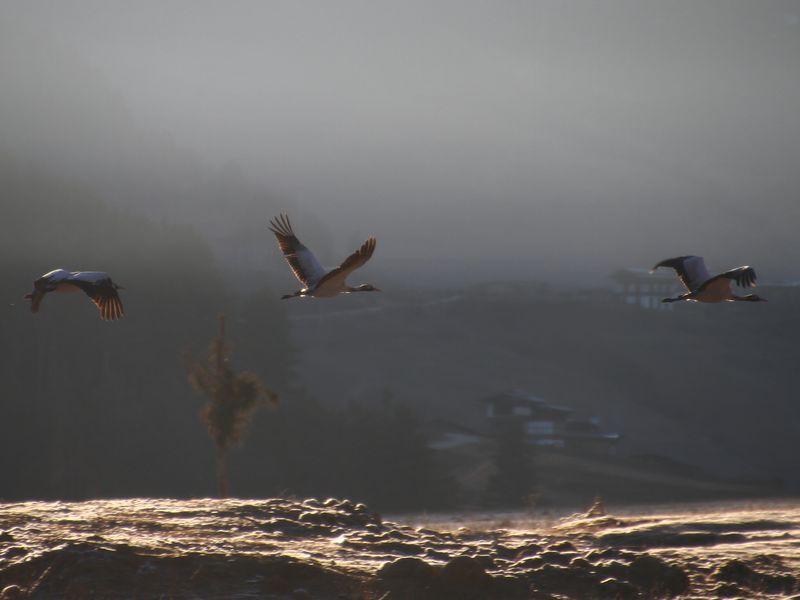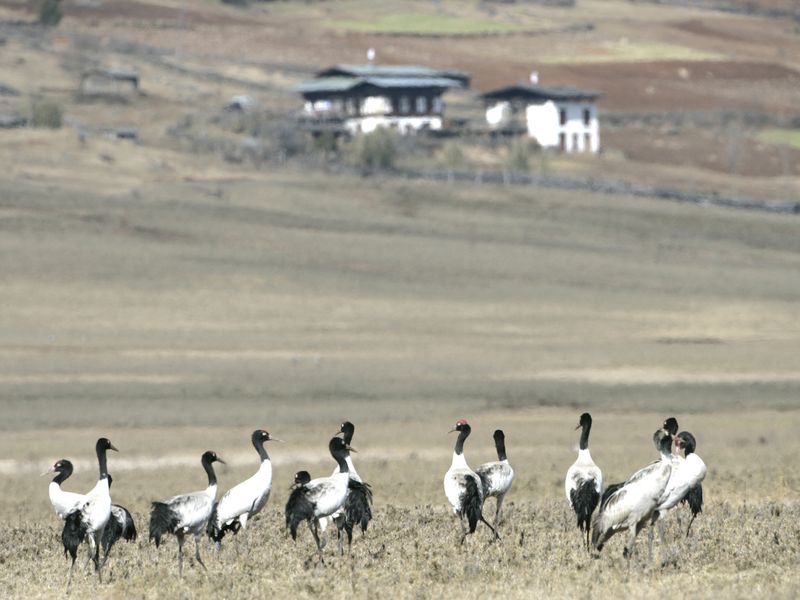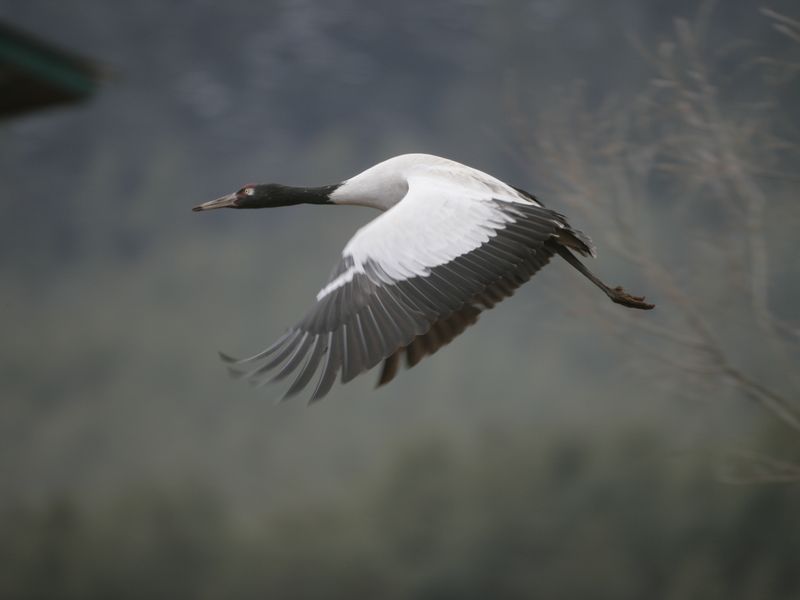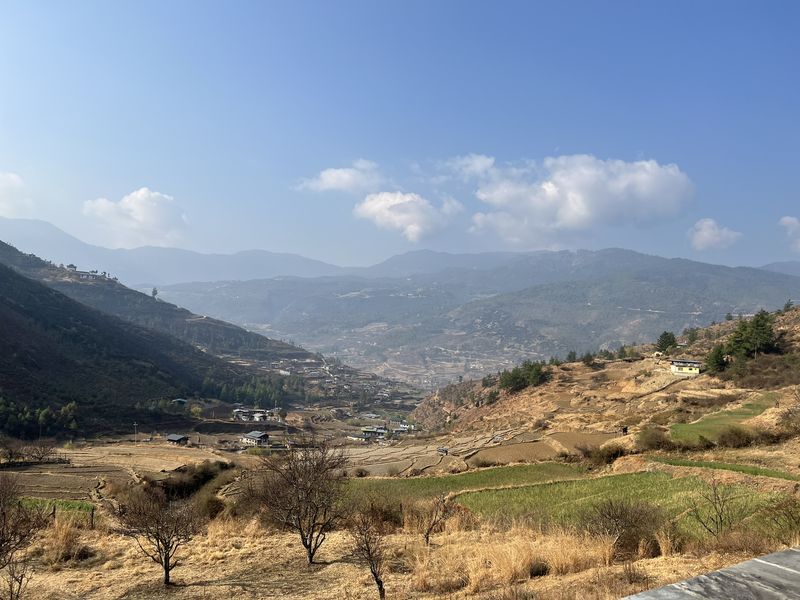See Himalayan Black-Necked Cranes in Bhutan
From late October to the end of February, flocks of migrating Black-Necked Cranes swoop down at sunset to roost in the sheltered Phobjikha Valley, a swish of beating wings announcing their arrival as they land. Take time to observe these elegant birds strut confidently across the untamed wetland landscape, extending their striking, monochrome feathers towards the sky.
When viewed at close range, it’s easy to see why Black-Necked Cranes are sacred within Buddhism. Like all members of the crane family, their angular legs and elongated necks give them a graceful silhouette, softened by a delicate expanse of billowy feathers.
Jet black heads and tails contrast eye-catchingly with grey-white bodies, and a flash of red around their eyes. Flying with their necks outstretched, these beautiful birds glide across the amber sunset each night towards their roost, and take flight majestically into the dawn sky each morning. They are believed to bring good luck, and are referred to in Bhutan as ‘Birds of Heaven’.
However, like so many species across the globe, Black-Necked Cranes are now endangered, and conservation is crucial to their survival. The Gangtey-Phobji glacial valley, which provides a temporary habitat for the migrating cranes each winter, has recently been given protected status as Bhutan’s largest Ramsar wetlands conservation site, and the Black-Necked Crane Festival - a fiesta of folk songs, dances and brightly coloured masks - is held at Gangtey Goenpa each November to raise awareness of the birds’ need for protection and to celebrate their annual arrival.
You can catch glimpses of these remarkable birds from several vantage points across Bhutan, but the best sightings are often had at the break of dawn from the Phobjikha valley RSPN visitor centre. At the forefront of Black-Necked Crane conservation, the RSPN is a crucial partner in ensuring the birds’ continued protection. Their visitor centre contains a wealth of information on the conservation work, as well as details of any injured cranes being rehabilitated, and the nearby eco-hide has especially focused ‘crane scopes’ so that you can watch the birds in the valley below without alarming them.
Head out in the early hours to the eco-hide, just 100m from the the roosting site, and wait for the sun’s first rays to illuminate the valley. Gradually, the cranes’ distinctive calls will join the dawn chorus, and you’ll have a perfect view of these beautiful birds as they stir and start to preen, find food and perform courtship dances in their mating pairs.



